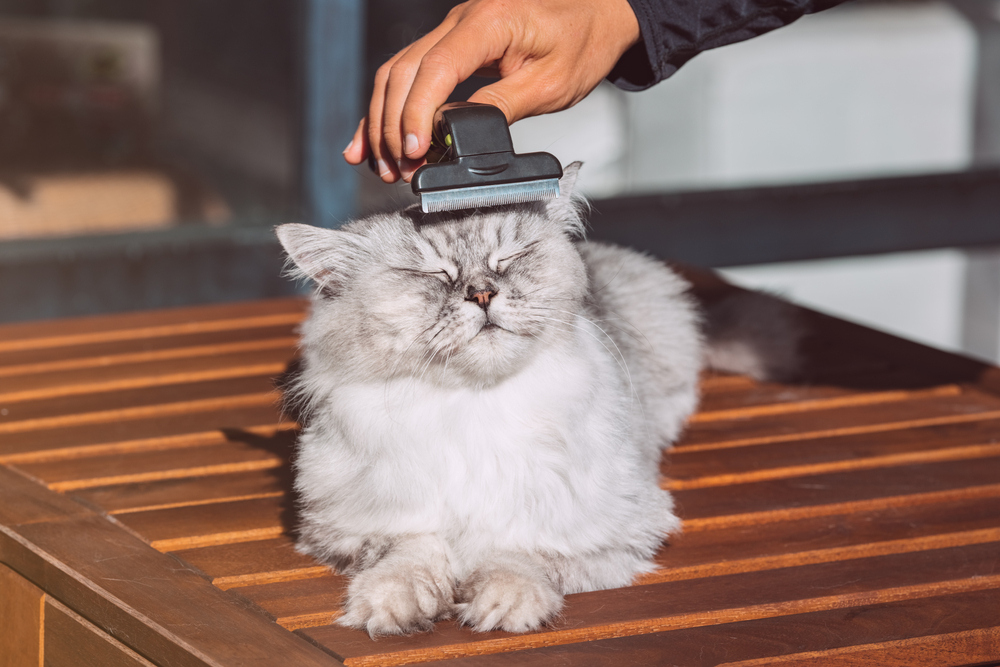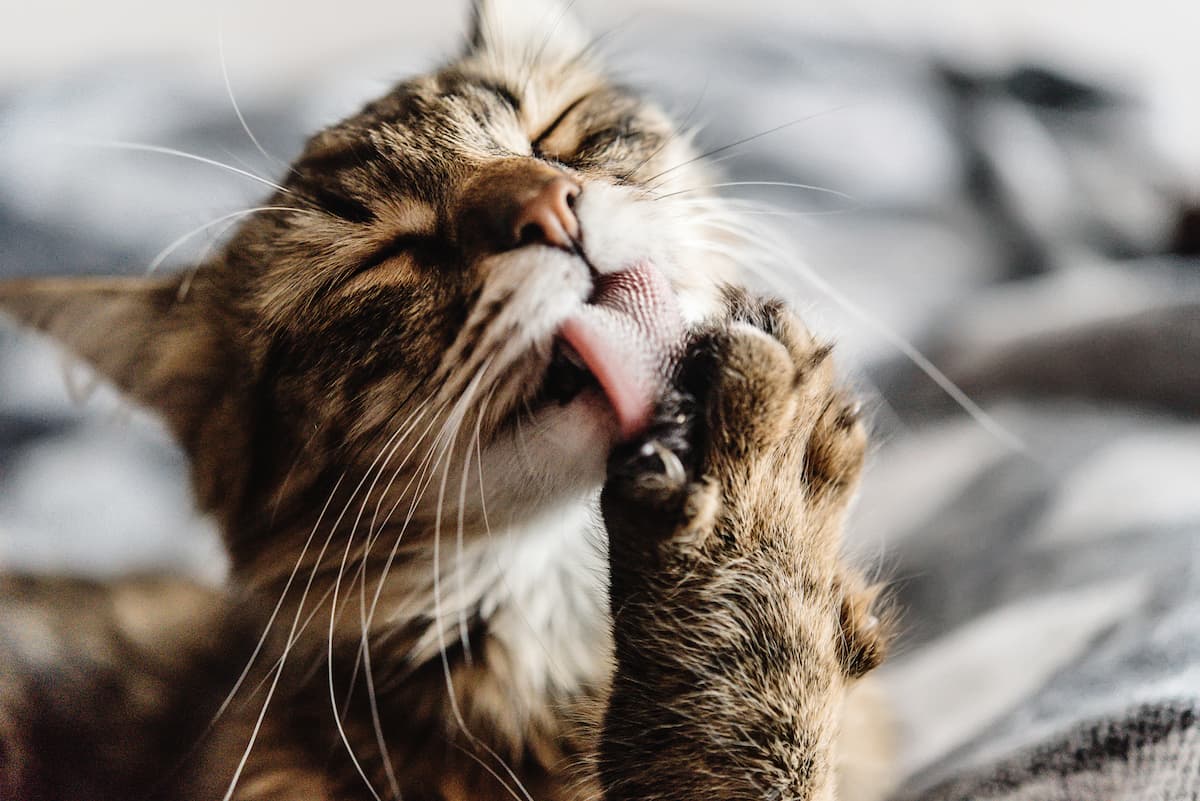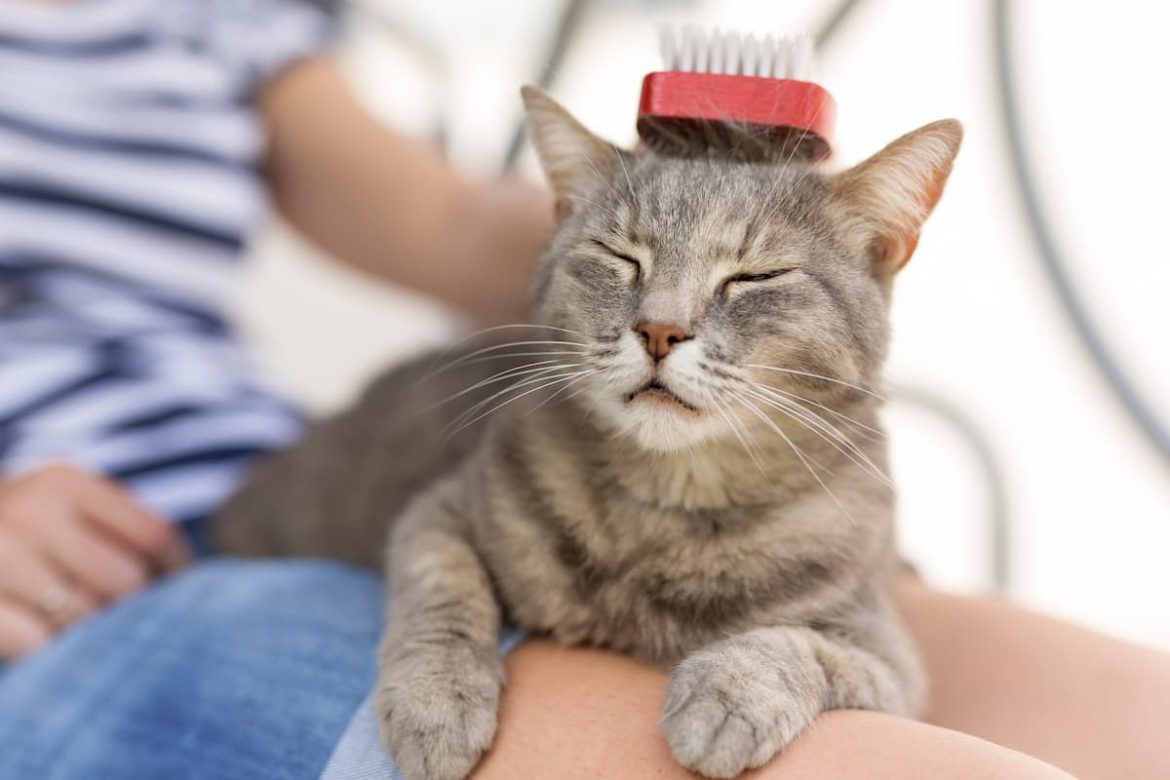As a Cat Owner, you’ve probably had someone (or just about everyone) look at your clothes and say, “Oh, do you have pets?” In the best case scenario, it’s a good conversation starter. In the worst, you’re realising that despite your best effort to remove all cat hair prior to that big presentation at work, somehow, your professional clothes are still covered in fluff.
Are you destined for a life of cat hair on everything you own? Or are there solutions that could actually allow you to live fluff-free? In this article, we’re combing our way through some of the best tips and tricks for dealing with cat hair!
 Why is cat fur so tough to manage?
Why is cat fur so tough to manage?
No matter if you have a luxuriously long haired Maine Coon or a silky-soft Somali Cat with short hair, most cats have the same basic coat type. There’s a downy under layer of fluff to keep them warm, and a protective outer layer that serves as a dirt shield, camouflage, and UV protection.
You might find, then, that you’ve managed to find a tool that picks up loose fur from the outer coat layer, which is thicker and more visible, but fails to grasp the wispy soft furs of the underlayer.
Another issue here is that cat fur is typically lighter and drier than other natural fibres, like human hair or wool. That means that with the slightest amount of static electricity, cat fur will stick to just about anything!
Finally, there’s the simple fact that cats are self-grooming machines! Having a clean coat is a top priority for your feline friend, and they’re spending a huge part of their day actively removing loose fur…all over your home and clothes.
💬 Fun fact: Not all cats shed!
Your mind may automatically jump to hairless cats like the Sphynx, but they’re not the only ones. If you’re looking to add a low-shedding cat to your family, you might consider a breed in the curly hair category, such as the Cornish Rex.
Investing in the right grooming tools
As we’ve established, part of the reason why it’s so difficult to keep up with your cat’s shedding is because they’re constantly grooming themselves. But, if you can incorporate a daily grooming practice, less of that fallen fur will end up on your furniture!
For short-haired cats, a standard slicker brush will pick up fur from both coat layers. You might also finish off your grooming session with a rubber grooming glove that will pick up loose fur from the outer coat.
In addition to a slicker brush, long haired cats need a shedding comb or de-matting brush that will detangle any knots, especially around the neck and in hard-to-reach areas.
Of course, once you buy the right grooming tools, you’ll need to make sure that your cat is comfortable and willing to be groomed everyday! Desensitise them slowly to the grooming supplies and offer plenty of treats to keep them interested and calm. Never force your cat to sit for a grooming session, otherwise, the stress could make their shedding even worse!
Reduce your cat’s overall stress
Speaking of stress-related shedding, it’s quite common for cats to lose more fur when they’re uncomfortable in their environment. Whether there’s a new family member in the home or you’ve moved the furniture around, a cat’s sensitivity to changes can prompt them to spend more time grooming.
Luckily, there are many ways to help your cat feel more comfortable in their space. If you’re noticing signs of anxiety or stress in your cat, installing cat shelving and other elevated areas for them to rest can give them a sense of security. And, daily exercise and calming pheromones can help regulate their mood and encourage relaxation. If you’re going to be leaving your furbaby for long periods, you can help them feel less stressed by calling in a doting Cat Sitter!
Keep in mind, also, that certain medical conditions can cause stress and hair loss in cats. If you think that your cat’s excessive grooming has something to do with their health, don’t hesitate to reach out to your vet.
 Get serious about cleaning tools
Get serious about cleaning tools
When it comes to cat hair, your standard house cleaning tools might not cut it! You’re going to want at least some of the following cleaning supplies:
- Lint rollers. Gone are the days of disposable lint rollers that always ran out on the day that you had that job interview or first date. With reusable, rollable pet hair removers, you’ll always be able to leave the house fur-free. Make sure to get a big enough lint roller for larger surfaces like lounges, and maybe a small travel pet hair remover, too!
- Rubber cleaning gloves. It might surprise you to learn that you already have one of the best pet hair removal supplies right in your cleaning closet! Rubber cleaning gloves pick up an impressive amount of cat hair through friction, and they allow you to remove fur from nooks and crannies that your lint roller can’t reach
- Pet hair broom. This soft-bristled rubber or silicone broom is another recent advancement in the world of pet care. Because cat hair is often too wispy and light to be properly sweeped with a traditional broom, pet hair brooms do a much better job of picking up cat fur and dander from your floors
- Cat hair laundry tool. You’ve probably noticed that washing clothes seems to remove everything except cat hair. You can fix this problem with specially designed laundry tools that trap pet hair during the wash. And, for an extra step, throw in a few microfibre towels in the dryer; the synthetic fibres will pull cat hairs off of your clothes
- High powered vacuum. Vacuuming is the crucial last step in removing pet hair from your home. You’ll be glad that you spent a bit of extra money on one that has the power to pick up cat hair. After all, you’ll be using it often!
Okay, this sounds like a lot of cleaning supplies. Just how much time are you going to have to spend to keep your home fur-free? The truth is, picking up pet hair for a few minutes everyday can go a long way in managing the fur problem in your home! It’s better to clean more frequently, so that the cat hair doesn’t have the chance to embed itself into soft surfaces.
Clean your air filters and fans
As a Pet Owner, it’s a good idea to clean or change your air filters more frequently than a household without pets. Your cat’s fine dander will get trapped in fans and filters quickly, so make sure to prevent build-up by checking and cleaning the filters once a month or once every two months.
Anticipate the shedding season
Cats typically shed year-round, but they also have a coat-blowing period in preparation for winter and summer. If you notice that your cat sheds more during autumn and spring, get on top of it by taking a few extra minutes for grooming every day. And remember that changes in how much your cat sheds could also be stress-related. So if your furry friend is losing lots of fur outside of the coat-blowing season, consider whether there’s an underlying cause.
Learn to love the fluff, without letting it take over your life!
You love your fluffy little feline, but it’s perfectly understandable for you to be frustrated by their fur! The good news is, with just a few minutes of grooming and cleaning per day, you can get on top of the shedding storm. And, remember that a lifestyle that keeps your cat happy, with regular playtime and visits from their favourite Pet Sitter when you’re gone, can go a long way in preventing stress-shedding.
So, stock up on some supplies and learn to love—or at least live with—the fluff!
Visit Pet Chemist Online where you’ll find a range of cat grooming products.

